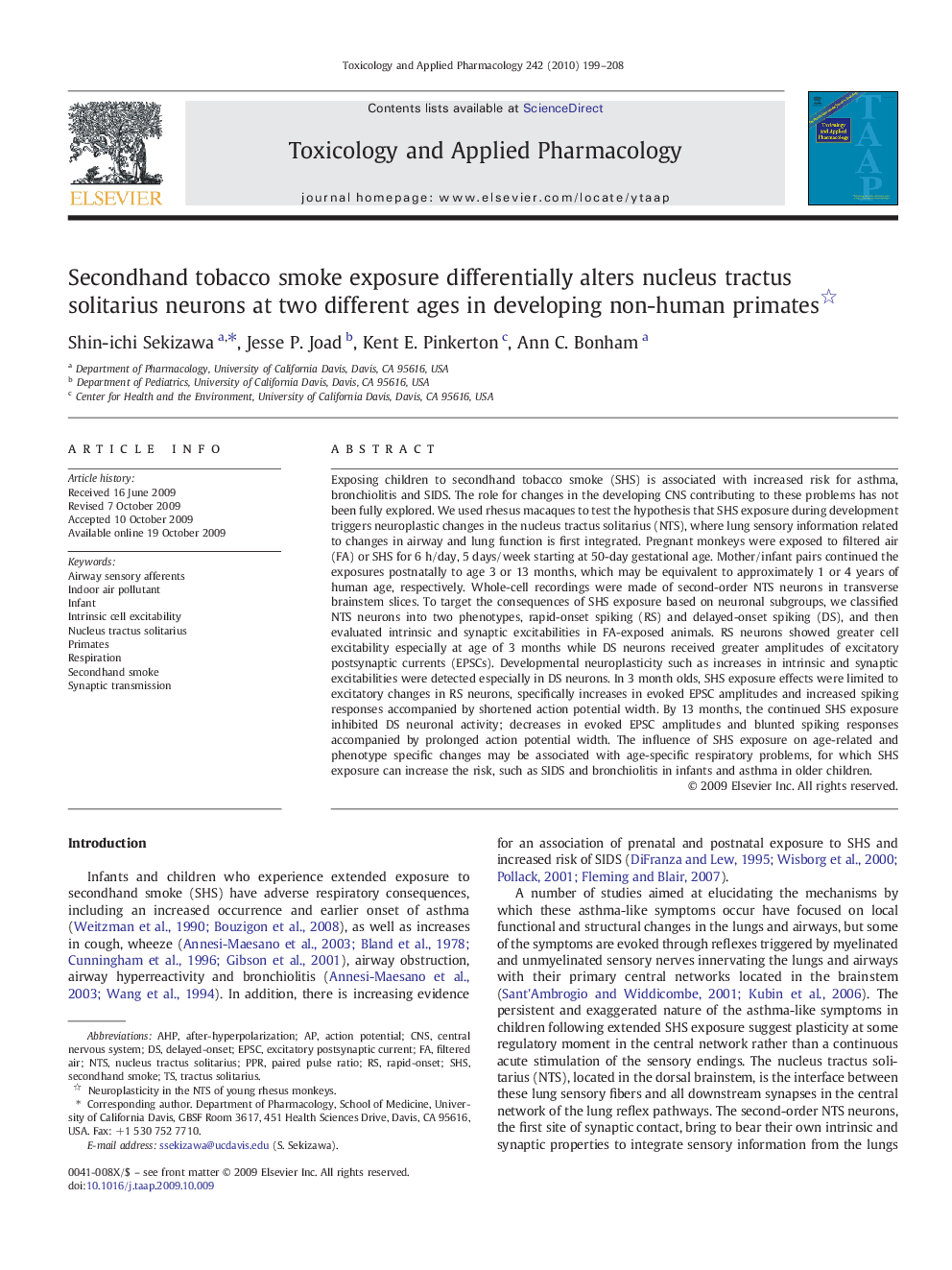| کد مقاله | کد نشریه | سال انتشار | مقاله انگلیسی | نسخه تمام متن |
|---|---|---|---|---|
| 2569850 | 1128554 | 2010 | 10 صفحه PDF | دانلود رایگان |

Exposing children to secondhand tobacco smoke (SHS) is associated with increased risk for asthma, bronchiolitis and SIDS. The role for changes in the developing CNS contributing to these problems has not been fully explored. We used rhesus macaques to test the hypothesis that SHS exposure during development triggers neuroplastic changes in the nucleus tractus solitarius (NTS), where lung sensory information related to changes in airway and lung function is first integrated. Pregnant monkeys were exposed to filtered air (FA) or SHS for 6 h/day, 5 days/week starting at 50-day gestational age. Mother/infant pairs continued the exposures postnatally to age 3 or 13 months, which may be equivalent to approximately 1 or 4 years of human age, respectively. Whole-cell recordings were made of second-order NTS neurons in transverse brainstem slices. To target the consequences of SHS exposure based on neuronal subgroups, we classified NTS neurons into two phenotypes, rapid-onset spiking (RS) and delayed-onset spiking (DS), and then evaluated intrinsic and synaptic excitabilities in FA-exposed animals. RS neurons showed greater cell excitability especially at age of 3 months while DS neurons received greater amplitudes of excitatory postsynaptic currents (EPSCs). Developmental neuroplasticity such as increases in intrinsic and synaptic excitabilities were detected especially in DS neurons. In 3 month olds, SHS exposure effects were limited to excitatory changes in RS neurons, specifically increases in evoked EPSC amplitudes and increased spiking responses accompanied by shortened action potential width. By 13 months, the continued SHS exposure inhibited DS neuronal activity; decreases in evoked EPSC amplitudes and blunted spiking responses accompanied by prolonged action potential width. The influence of SHS exposure on age-related and phenotype specific changes may be associated with age-specific respiratory problems, for which SHS exposure can increase the risk, such as SIDS and bronchiolitis in infants and asthma in older children.
Journal: Toxicology and Applied Pharmacology - Volume 242, Issue 2, 15 January 2010, Pages 199–208